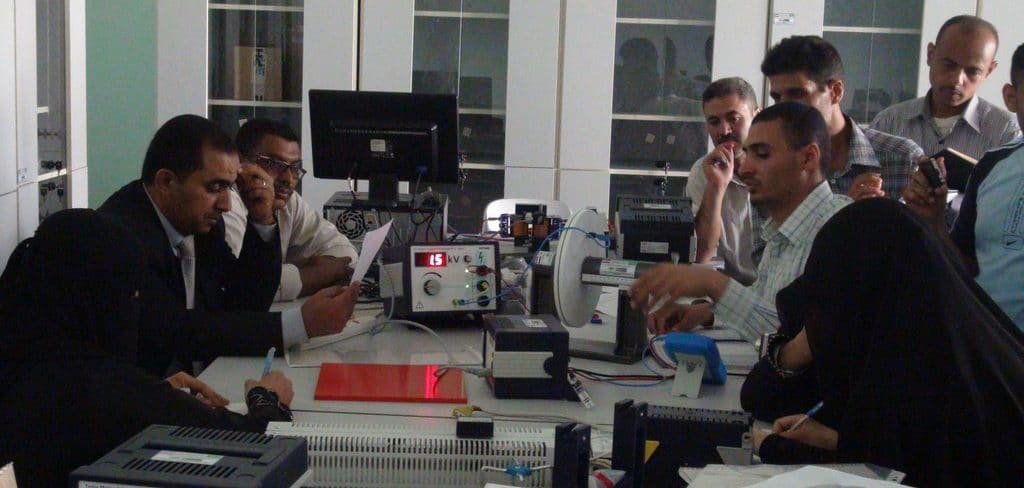We supply an integrated inorganic chemistry training lab covers various topics of inorganic chemistry includes experiments that aim to develop the student’s laboratory skills and demonstrate the majority of important techniques in inorganic chemistry. The lab experiments are based upon synthesis and physical measurements of coordination and organometallic compounds.
The training lab of inorganic chemistry enables students by using X-ray investigations and UV-VIS spectroscopy techniques to apply many experiments and activities such as:
- Redox reactions between metals and metal oxides (thermite process)
- Molten-salt electrolysis
- Complex formation equilibrium / equilibrium constant
- Haloalkanes: Grignard reagent
- Haloalkanes: Wurtz reaction – lithium organics
- Examination of the structure of NaCl monocrystals with different orientations
- X-ray investigation of cubic crystal structures / Debye-Scherrer powder method
- X-ray investigation of hexagonal crystal structures / Debye-Scherrer powder method
- X-ray investigation of crystal structures / Laue method with a digital X-ray image sensor (XRIS)
- X-ray investigation of crystal structures / Laue method
- Debye-Scherrer diffraction patterns of powder samples with three cubic Bravais lattices
- Debye-Scherrer diffraction patterns of powder samples with a hexagonal lattice structure
- Debye-Scherrer diffraction patterns of powder samples with a tetragonal lattice structure
- Debye-Scherrer diffraction patterns with a cubic powder sample
- Debye-Scherrer diffractions pattern of powder samples with a diamond structure
- Atomic Resolution of the graphite surface by STM
- Basic methods in imaging of micro and nanostructures with AFM
- Quantitative X-ray fluorescence analysis of solutions
- Qualitative X-ray fluorescence spectroscopy of metals – Moseley’s law
- Qualitative X-ray fluorescence analysis of alloyed materials
- Fundamental principles of Nuclear Magnetic Resonance (NMR)
- Relaxation times in Nuclear Magnetic Resonance
- Absorption of light (UV-VIS spectroscopy)
- Absorption spectra and pKa values of p-methoxy phenol
- Multicomponent analysis
- Multicomponent analysis with measure Spec (mixed color photometry)




